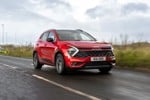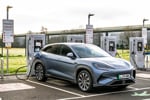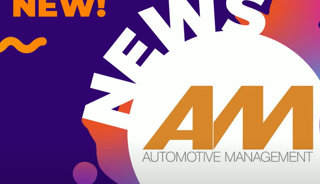Digital automotive retail tools can bring and end to a one-size-fits-all sales experience for car buyers, according to Keyloop chief executive Tom Kilroy.
In this AM guest opinion article, drawn from his recent appearance on-stage at Automotive Management Live, Kilroy gives some of the evidence that backs up his assertion that increasing numbers of customers are actively seeking-out a frictionless, digitalised sales process.
Across every industry and sector, digital transformation is inevitable. Technology is disrupting how we live, work, eat and travel - driven by changing consumer preferences and smart innovations that make our lives easier.
Once technology has taken hold, change happens fast. Not everyone will be early adopters, but digital transformation has a ripple effect; think Zoom, Netflix, Xero, Oyster, Deliveroo, Apple Pay – the list goes on. As soon as consumers have had a taste of a new digital experience and the benefits for themselves, this leads to repeat behaviour and so the trend spreads.
Automotive retail offers huge potential for digital transformation, yet we are still to reap the rewards as an industry.
While we need to make progress fast, we cannot expect change overnight, and we cannot assume that all consumers will want to engage with digital tools in the same way, or with the same frequency.
The key is to ensure that we are making improvements across the entire consumer car buying and ownership journey, allowing for personalisation depending on consumers’ preference, and giving them the same standard of digital experience as in other areas such as food delivery or virtual healthcare services.
The impact of COVID has undoubtedly accelerated the need for these changes, driving consumers to seek a more connected and personalised digital experience.
Our research in collaboration with Frost & Sullivan (2021) found that UK consumers are generally in agreement over certain aspects of the digital car buying and aftersales experience.
For example, 72% are keen to use personalised digital tools (such as video calls, live chats, and virtual walk-arounds) to engage with salespeople.
An overwhelming 96% would like to be able to book an extended test drive online, and 78% would like the ability to sign sales documentation electronically. Similarly, 82% of consumers would like to use digital tools to improve their aftersales experience.
Digital tools are now commonplace across a majority of retail interactions, and evidently, consumers are ready for the automotive industry to do the same.
Consumers want to have up-to-date and transparent information about their vehicle’s status during servicing and 55% have said they would like text updates on the work and status of their vehicle, while 51% would like video updates.
By using such digital tools, Service Advisors could potentially reduce time spent making traditional calls by up to 50%, as well as increasing transparency and building trust.
Another tool that can make a customer’s experience more seamless is a secure key drop locker – we found that 45% of customers would like to try this feature, which speeds up the vehicle drop-off and pick-up process and improves service department efficiency.
There are also large gaps in willingness to purchase a car fully online when we look at generational and regional data.
Unsurprisingly, it is the digital native generations that are most likely to buy a car online, challenging the traditional path to purchase used by previous generations.
According to YouGov research (2021), a third of Brits across the 18 to 44 age group would consider purchasing their next vehicle online, dropping to 28% of 45 to 54-year-olds and 21% of the 55-plus age group.
Not only is age a factor in preference for buying online, but so too is market.
In the same research, online vehicle purchases in the US lagged global averages across every age group, while the UAE and APAC regions were higher than global averages for all age cohorts 25 and older.
These findings reveal that there is still a long way to go before digital tools are widely accepted and adopted by consumers across the board, but dealerships need to have the ability to offer a wide range of services digitally so the consumer can choose the journey that suits them best.
We cannot expect all consumers to suddenly opt for an end-to-end digital experience, but it is vital that we give them the option to do so and prepare for the digital future.
In-person and digital experiences should work in tandem, each enhancing the other and providing consumers with personalised services and communications depending on their preferences. This functionality not only benefits consumers, but the dealership too; data from RAPID RTC, part of the Keyloop family, reports that there is a threefold increase in customer responses when multiple channels are used to communicate.
Consumers need to be able to access information and be communicated with in a timely and relevant manner, on a platform that suits them. Only then can we create a truly digital ecosystem in automotive retail.


















Login to comment
Comments
No comments have been made yet.